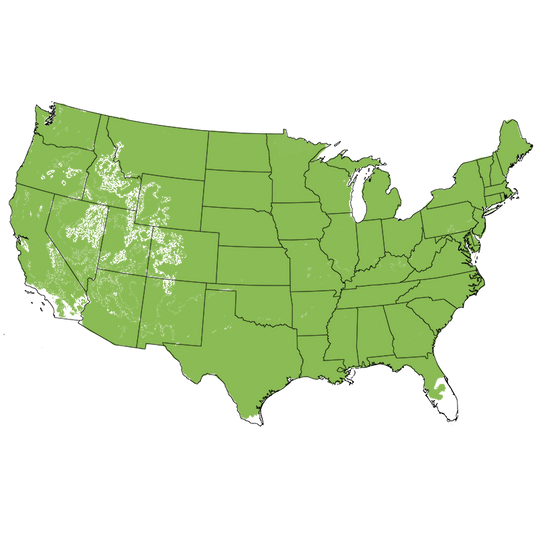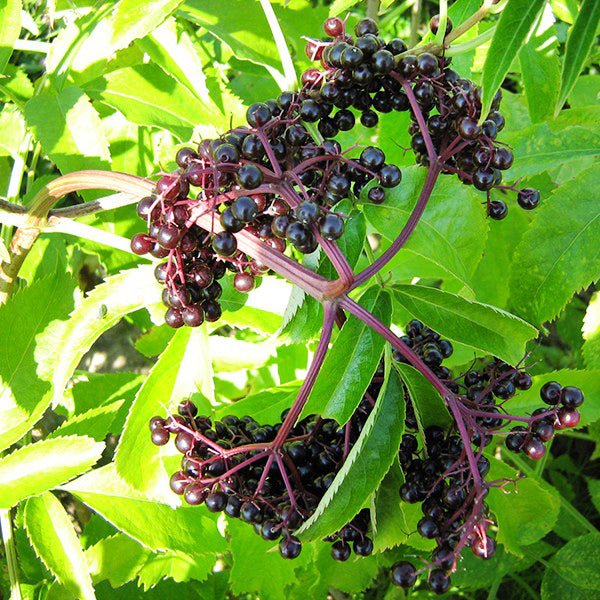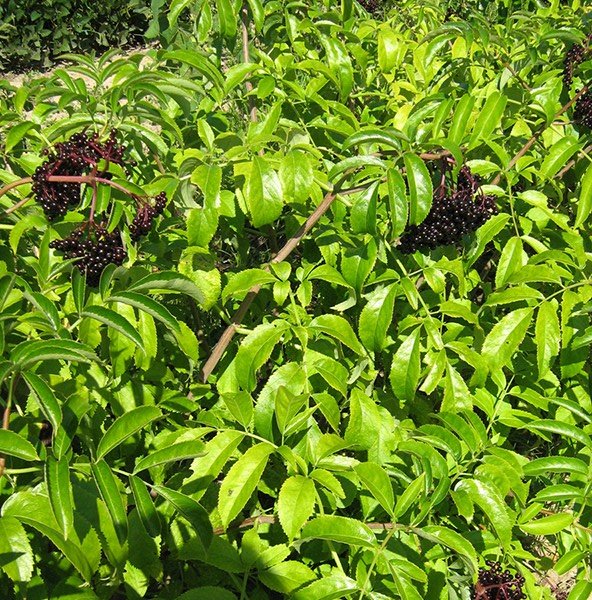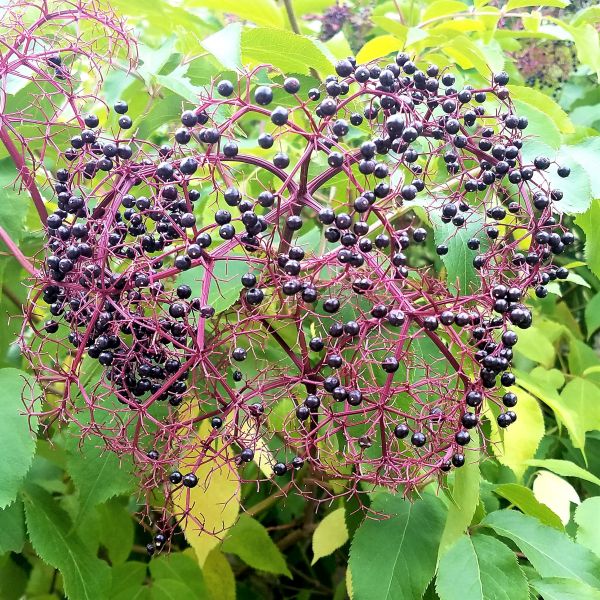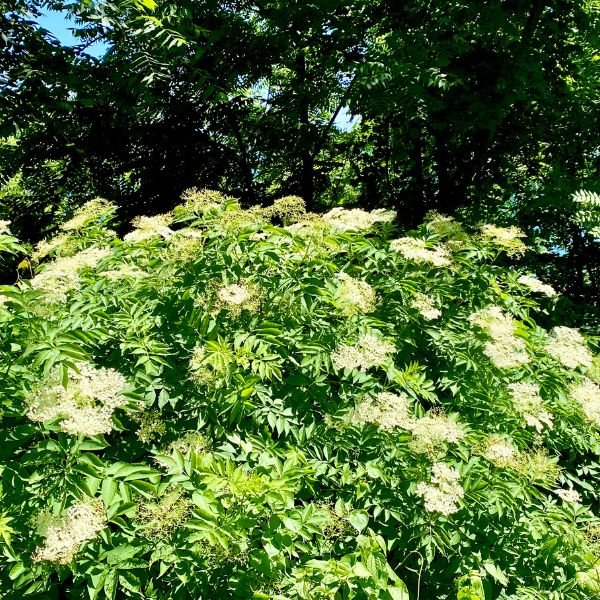York Elderberry
Sambucus canadensis 'York'
Plant Sentry™
Plant Sentry™

Plant Sentry™ Protected
Your order is protected by our compliance system that:
- Prevents restricted plants from shipping to your state
- Ensures plants meet your state's agricultural requirements
- Protects gardens from invasive pests and diseases
Delivery and Shipping
Delivery and Shipping
Delivery and Shipping
Fast, Safe Plant Delivery
Ships in 3-4 business days • Tracking provided • Weather protected
| Under $50 | $9.99 |
| $50 - $99.99 | $14.99 |
| $100 - $149.99 | $16.99 |
| $150 - $198.99 | $24.99 |
| $199+ | FREE |
✓ Zone-specific timing • ✓ Professional packaging • ✓ Health guarantee
Understanding Plant Options
Nature Hills offers plants in two main formats:
- Container Plants: Grown in pots with soil, sized by container volume and plant age
- Bare Root Plants: Dormant plants without soil, sized by height measurements
Container Plant Sizes
Container sizes indicate plant age and growing capacity rather than liquid volume equivalents. Our containers follow industry-standard nursery "trade gallon" specifications, which differ from standard liquid gallon measurements.
Young Plants (6 months to 18 months old)
| Container Size | Actual Volume | Metric Equivalent |
|---|---|---|
| 2" x 2" x 3" | 0.18 - 0.21 dry quarts | 0.20 - 0.23 dry liters |
| 4" Container | 0.31 - 0.87 dry quarts | 0.35 - 0.96 dry liters |
| 4.5" Container | 0.65 dry quarts | 0.72 dry liters |
| 6" Container | 1.4 dry quarts | 1.59 dry liters |
| 1 Quart | 1 dry quart | 1.1 dry liters |
| 5.5" Container | 1.89 dry quarts | 2.08 dry liters |
Established Plants (18 months to 2.5 years old)
| Container Size | Actual Volume | Metric Equivalent |
|---|---|---|
| 2 Quart | 2 dry quarts | 2.2 dry liters |
| #1 Container | 2.26 - 3.73 dry quarts | 2.49 - 4.11 dry liters |
| 5" x 5" x 12" | 3.5 - 4.3 dry quarts | 3.85 - 4.74 dry liters |
Mature Plants (2-4 years old)
| Container Size | Actual Volume | Metric Equivalent |
|---|---|---|
| #2 Container | 1.19 - 1.76 dry gallons | 5.24 - 7.75 dry liters |
| #3 Container | 2.15 - 2.76 dry gallons | 8.14 - 12.16 dry liters |
Large Plants (3-5 years old)
| Container Size | Actual Volume | Metric Equivalent |
|---|---|---|
| #5 Container | 2.92 - 4.62 dry gallons | 12.86 - 20.35 dry liters |
| #6 Container | 5.25 - 6.01 dry gallons | 23.12 - 26.42 dry liters |
| #7 Container | 5.98 - 6.53 dry gallons | 26.34 - 28.76 dry liters |
Bare Root Plants
Bare root plants are sold by height from the root system to the top of the plant. Plants may exceed minimum height requirements.
Common Sizes:
- Trees: 1 foot, 2 feet, 3 feet, 4 feet, 5 feet, 6 feet
- Shrubs & Perennials: 1 foot, 18 inches, 2 feet
Important Notes
Container Volume Specifications
- Trade Gallon Standard: Our containers follow industry-standard "trade gallon" specifications established by the American National Standards Institute (ANSI Z60.1) for nursery stock
- Volume Variations: Actual soil volume may vary due to plant root systems and growing medium settlement
- Age Indicators: Container size primarily indicates plant age and maturity rather than liquid volume equivalents
Growing Conditions
- Plant size can vary based on variety and growing conditions
- Container size helps indicate plant maturity and establishment level
- Larger containers generally mean more established root systems and faster landscape establishment
Seasonal Availability
- Bare root plants are available seasonally when dormant
- Container plants are available throughout the growing season
- Specific varieties may have limited availability in certain sizes
Questions?
For questions about specific plant sizes or availability, please contact our plant experts who can help you choose the right size for your landscape needs.

Plant Sentry™ Protected
Your order is protected by our compliance system that:
- Prevents restricted plants from shipping to your state
- Ensures plants meet your state's agricultural requirements
- Protects gardens from invasive pests and diseases
Plant Profile & Growing Essentials
Cold hardy, Native, Flowering, Wet Soils, Clay Tolerant, Edible, Ornamental Berries/Fruit, Attracts pollinators, and Hedge/Screen
Specifications
Specifications
-
Botanical Name
-
Height
-
Width
-
Growing Zones
-
Sunlight
-
Growth RateFast
-
Flower Color
-
Leaf Color
-
Fall Color
-
NativeYes
-
Pollinator FriendlyYes
-
Pollinator Required
-
Bloom PeriodEarly Summer, Late Summer
Planting & Care
Planting & Care
For a wonderful flowering and fruiting display in the landscape, the versatile York Elderberry, (Sambucus canadensis 'York') is hard to beat. Feed the birds, or cook the large, purplish-black berries down for your family. It grows into a beautiful, informal hedge that requires very little care.
York is an American native cultivar, unlike the European Elderberries (Sambucus nigra). York has been an important variety and staple medicine of Native American Indians, early explorers and settlers, now gracing today's modern landscapes!
Elderberries have been a highly regarded plant and food source. Include them in your edible landscape, or feed songbirds and butterflies in your garden. Pretty springtime flowers and early fall fruiting displays add wonderful visual interest to the landscape!
In early summer, York Elderberry will produce the most amazingly huge, broad clusters of lemon-scented, white flowers. Distinctively ornamental pinnate, finely serrated foliage adds to the decorative display.
The floral clusters cover the plant at regular intervals from the top to the bottom of the shrub. Overall, it's an outstanding appearance but look closer… five tall yellow stamens extend well above each tiny, umbrella-shaped bloom! These bright stamens sparkle in the sunlight! Each of the pretty blooms will develop into a gorgeous, richly-colored berry.
Better yet, the flat-topped flowers attract and support a wide variety of beneficial insects like bees, butterflies, and more! The blooms not only provide pollen to native bees but nectar for hummingbirds and more!
Berries ripen best in full sun. You may achieve up to 30 pounds of fruit from a single plant once it's established and you've planted it with appropriate pollination partners! York Elderberry produces the largest fruit size and finest quality of any of the Elderberries.
York is self-fruitful but will set a significantly larger crop when planted with another Elderberry variety such as the Adams, Nova, Johns, Golden, or a native S. canadensis. York is also one of the best pollinators for all other S. canadensis varieties.
These deep, dark-colored berries are very special. Pick the entire cluster of fruit when fully ripe. You'll strip the berries to remove them from the bright stems. Cook them down to bring out the sweet flavor. You may not even need to add sugar!
York is recognized by the USDA Database for Flavonoid Content of Selected Foods as a super fruit because of its high concentration of vitamin C. Elderberries are high in Vitamin C and are used in many dishes including jams, preserves, pies, and syrups. It is also famous for making juice blends and the wonderful Elderberry Wine.
You've probably seen Sambucus at the drugstore sold as a cough and cold remedy. Try your hand at your own medicinal syrups and tinctures, carefully following published recipes from reputable sources. Even the flowers are medicinal edibles!
In the wild, York is typically found naturalized along streambeds, in moist woodland settings, in thickets, and along roadsides throughout the eastern part of North America throughout USDA planting zones 3 to 9. You'll be surprised to find out how versatile this native plant cultivar can be in modern landscapes as a large 10-12 foot tall shrub or small tree.
Planting and Application:
Use York Elderberry as a specimen shrub in a perennial garden in full sun and edible landscaping accents! Give it the space it needs to develop into its full height and width. The big airy and open shrubs will create a lovely informal free-form look all on their own.
A single plant planted at the corner of a shed or building easily softens the look and grounds the building to the landscape. You can limb-up and create a unique tree form! Try creating a drooping umbrella canopy or a narrow and more upright form. Plant your Elderberry tree on a berm where the lacy foliage and large flower clusters can shine!
York Elderberry is also a great shrub to use as a useful border planting and backdrop to your landscaping beds and victory gardens. It can grow into a lovely screen, shelterbelt or hedgerow. To create a solid screen, plant 5 feet apart on center. You'll measure from the center of one to the center of the next. You'll be so pleased to see how fast they fill in.
If you have a large landscape, try naturalizing them at the edge of a woodland, or surrounding a pond, for light privacy or bulk up a windbreak. You'll create a fantastic wildlife habitat and bird-friendly nesting while boosting pollination among all the shrubs. Use this native treasure to support local ecology and waterways and as a dual-purpose ornamental landscaping plant. You'll be rewarded with dancing butterflies and the motion and sound of happy songbirds. What a treat!
Add to a Rain Garden to help filter rainwater runoff from roofs and streets before it hits the storm sewer. Likewise just as drought-tolerant and xeric once established, Elderberry thrive in the Rock Garden! There are few conditions that these native cultivars won't be able to tough out, but a fertile garden setting will result in the most fruit, the biggest bloom display, and the most stress-free plants.
- Fine-Cut Green Leaves Emerge in Early Spring
- Creamy White Blooms in Early Summer Bring Butterflies
- Glossy Purple Berries Make Tasty Jam or Wine
- Foliage Looks Great in Cut Flower Arrangements
- Train Into A Tree Form & Great in Containers
- Wonderful for Mass Planting, Hedges, Specimens & Airy Presence
#ProPlantTips for Care:
For the most fruit and flowers, and the strongest growth possible, plant your Elderberry in full sun, but these hardy plants can handle a touch of partial shade. They grow best in well-drained soils that are high in organic matter. Mulch heavily in warmer, drier climates to ensure that the shallow roots are kept cool and moist. Give it regular water during its first year, then water during drought and excess heat. Fertilize in the spring and mid-summer with an acid fertilizer, such as Dr. Earth's Acid Lovers Premium and Organic Fertilizer.
York Elderberry is a cane-producing shrub a bit like Blackberries and Raspberries, and Elderberry flower on last year's wood. When used as an ornamental (not depending on flowers or fruit), cut the plant back to the desired shape after the plant leafs-out in spring. This delay will somewhat limit fruit production for that season. For that reason, it is recommended you instead renewal prune when dormant, removing 3-year-old canes back to the ground. Cut back all 2-year canes by half and remove all weak and dead canes.
- Cold & Heat-Hardy
- Grows in Full Sun or Partial Shade
- Highly Adaptable to Any Well-Drained Soil Type
- Thrives In Moist to Dry Conditions Once Established
- Flowers On Old Wood - Prune After Flowering
- Easy to Grow & Fast-Growing!
The York Elderberry will provide you with years of beauty and bounty and requires little care from you! Its hardy and adaptable nature, coupled with its lovely flowers and delicious fruit, make the York one of the most important of all the Elderberry varieties and a perfect plant for your landscape.
Order your potted or bareroot York Elderberry Bushes today from NatureHills.com!
